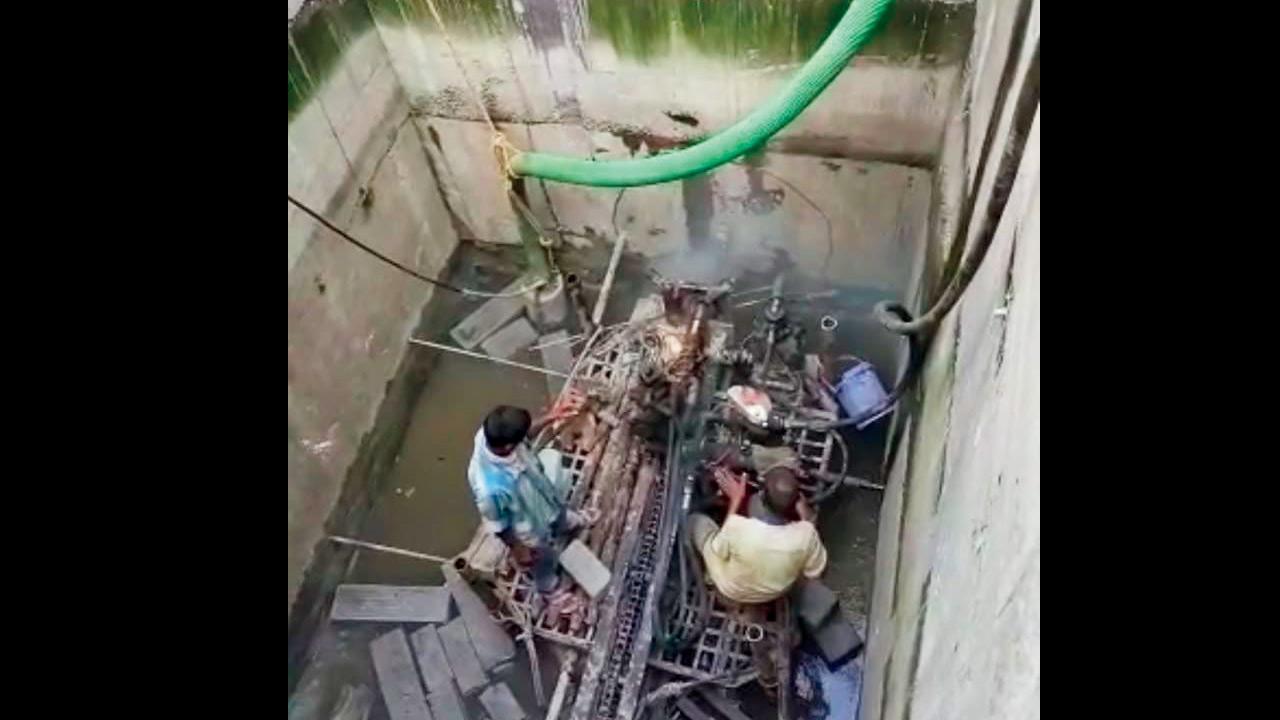Civic work on underground RCC pipe to drain water from tracks to be completed by month-end; similar work done at Sandhurst Road station, Dadar-Parel; another channel is at Tilak Nagar-Kurla

The channel will prevent storm water coming into railway premises and eliminate flooding of tracks
The Central Railway on Sunday announced one more underground channel below the city’s railway tracks to drain flood water during the monsoon, this time at Masjid Bunder. Three such channels have been built this year in low-lying areas of Matunga-Dadar, Sandhurst Road and Tilak Nagar-Kurla with less waterlogging reported in these areas this season.
“Central Railway has found a way to overcome flooding of tracks at Masjid railway station, which is at lower than ground level. It was decided to lay a 1,000 mm diameter RCC pipe by micro-tunnelling method without disturbing rail movement, as this method has given very good results at Sandhurst Road station, where a 1,800mm diameter RCC pipe was laid for 425-metres connecting the west side to the east side under railway tracks,” Central Railway Chief Public Relations Officer Shivaji Sutar said. The channels drain into the city's storm water drains.
A meeting was held in coordination with Municipal Commissioner Iqbal Chahal and Mumbai Divisional Railway Manager Shalabh Goel in February 2021 wherein it was decided to go ahead with the project to prevent flooding of tracks during monsoon. “The situation worsens during high intensity rainfall coupled with high tide, due to inadequate capacity of culvert, and lower storm water drainage network carrying capacity. This project which covers both railway and municipal areas, started at the end of April 2021 in co-ordination with railways and the work in railway areas was completed recently,” Sutar said.
Work of connecting the newly-laid RCC pipe to the BMC water drainage network is in progress and is likely to be completed this month-end. Storm water will pass through this newly laid culvert once the whole project is completed. It will prevent storm water from coming inside railway premises and eliminate flooding of tracks. Similar work of micro-tunnelling in co-ordination with civic authorities was completed at Sandhurst Road station and Dadar-Parel during the monsoon this year.
“Micro-tunnelling is a proven technology widely adopted and recently tried, tested and executed at the Sandhurst Road railway station area. The Railway portion of micro-tunnelling work at Masjid railway station has been completed in a very short period and this will help prevent waterlogging during monsoon at Masjid railway station,” Anil Kumar Lahoti, General Manager, Central Railway said.
What the process involved
>>Detailed topographical survey to fix the level of pipe
>>Survey to find underground obstruction
>>Geological survey by taking bore logs
>>Construction of jacking and receiving pit
>>Aligning and setting up a micro-tunnelling boring machine
>>Casting and testing of 1,000mm diameter RCC jacking standard pipes
>>Laying of RCC jacking pipe by micro-tunnelling boring machine
1,000 mm
Diameter of the pipe laid under Masjid station
 Subscribe today by clicking the link and stay updated with the latest news!" Click here!
Subscribe today by clicking the link and stay updated with the latest news!" Click here!









